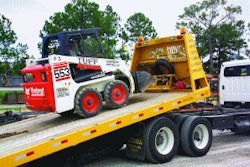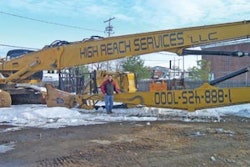
Over the past few weeks, a couple of my clients and I have been working on their annual budgets. During our first draft, I let each client stay with their historically low gross margins as the starting point for the budget.
Upon completion of their first drafts, each client looked at the bottom line and said "That's it? We grow the business that much and that's all we get?"
Their question opened the door to a conversation I was waiting to have with them: gross margins.
If you don't figure out how to increase margins, you're not going to see a huge jump in your bottom line. Construction is not like manufacturing where there is an economy of scale that lowers costs as volume increases. The overhead of construction companies stays proportional to the volume of work the company performs once that volume grows past about $1.5 million. The ratio moves within a range but it stays bounded by upper and lower limits. Therefore, the only way to really juice the bottom line is to juice the gross margins.
Profit Starts at the Job Level
If a contractor is not making a suitable margin on his work, his business is not likely to be very profitable. Every job needs to be profitable. Contractors need to focus on increasing their gross margins.
That's what business comes down to. Can you sell enough work at an attractive margin?
Selling volume at high margin should be the goal of every business. That certainly is the focus of our coaching efforts. It doesn't matter what our clients' exit strategies are, each strategy is powered by volume at margin.
Too many contractors believe they cannot influence their margins. They get brainwashed by end users and general contractors that low price wins. They get beaten down into accepting that a poorly run project is just something a subcontractor has to accept. They become convinced that field productivity can't be improved.
Eventually, almost all contractors throw in the towel on actions that would increase margins. So they focus on sales volume instead.
If you sell more work at a lower margin, the bottom line can grow. However, due to the risk inherent with low margin projects, the bottom line rarely grows consistently when a low-margin high volume strategy is pursued.
High margins are like an insurance policy. The higher the margin the larger the estimating error you can suffer without going in the hole. The higher the margin, the less problematic slow paying clients are. The higher the margin, the easier you can live with a project where you get stuck with an incompetent GC superintendent. The higher the margin, the greater equipment and staffing risks you can take.
High margins allow for risk taking. Low margins don't.
You have three ways to improve margins: raise price, lower direct costs and avoid bad clients. You should strive to excel on all three.
Avoid Bad Clients
Bad clients kill your margin in multiple ways.
- They drive down your price by hook or crook.
- They force you to do extra work without compensation.
- They run jobs poorly. In doing so, they greatly reduce your crew's productivity.
- They hire incompetent designers and other subcontractors.
- They back charge you for damage that wasn't caused by your crews.
- They withhold final payment until you agree to a reduced amount.
This is why we stress over and over again that you can't afford to work for bad clients. You'd be far better off dialing back your overhead and reducing your sales volume. Don't grow your business beyond that which can be supported by your local market's pool of good clients.
Lower Your Direct Costs
The second approach for improving your margins is to lower your direct costs. You can lower field costs in three ways: decrease worker inefficiencies, cut down on material waste and invest in the appropriate equipment.
Several different issues decrease your crews' efficiency. The most common contributors are:
- failure to set performance goals
- failure to give them the right equipment
- failure to keep roadblocks out of their way such as poor material access
- failure to train them how to perform their jobs efficiently
- failure to stay ahead of them with information requests, shop drawings and change order approval.
A far smaller impact on field costs is material waste. Often, through improved material management waste can be minimized. However, do not sacrifice worker productivity in pursuit of reduced material waste. This is a common mistake made by bean counters.
Finally, make sure that you have the right equipment for the job. If you need a bigger machine than you own, rent it. Or go the other way. If your standard equipment is too large to do a project efficiently, rent a smaller one.
Raise Price
The first approach to raising margins is, quite frankly, the most difficult to implement: sell effectively.
Nine times out of 10, when we hear about a contractor who is running a legitimately profitable business we discover that his business has a highly effective sales strategy. Not marketing strategy. Sales strategy. Either the business is small and the owner himself has an "uncanny way of getting clients to hire him" or the business is fairly good sized and the owner has hired a high performance sales staff.
Find profitable niches. Hire motivated, skilled salesmen who will create their own leads and close deals at elevated margins. If you have those skills, put them to use and backfill your operations management role.
Do not underestimate the benefits of being able to sell your work at higher prices. Nothing improves your financial outlook faster.
Bringing It All Together
If you manage to bring all three approaches together, you will see a tremendous increase in both your gross margins and your bottom line. Your business cannot be all it can be when one of the three is lacking.
Remember: profit starts at the job level.
If you want to grow your business relatively risk free, increase your gross margins.




















